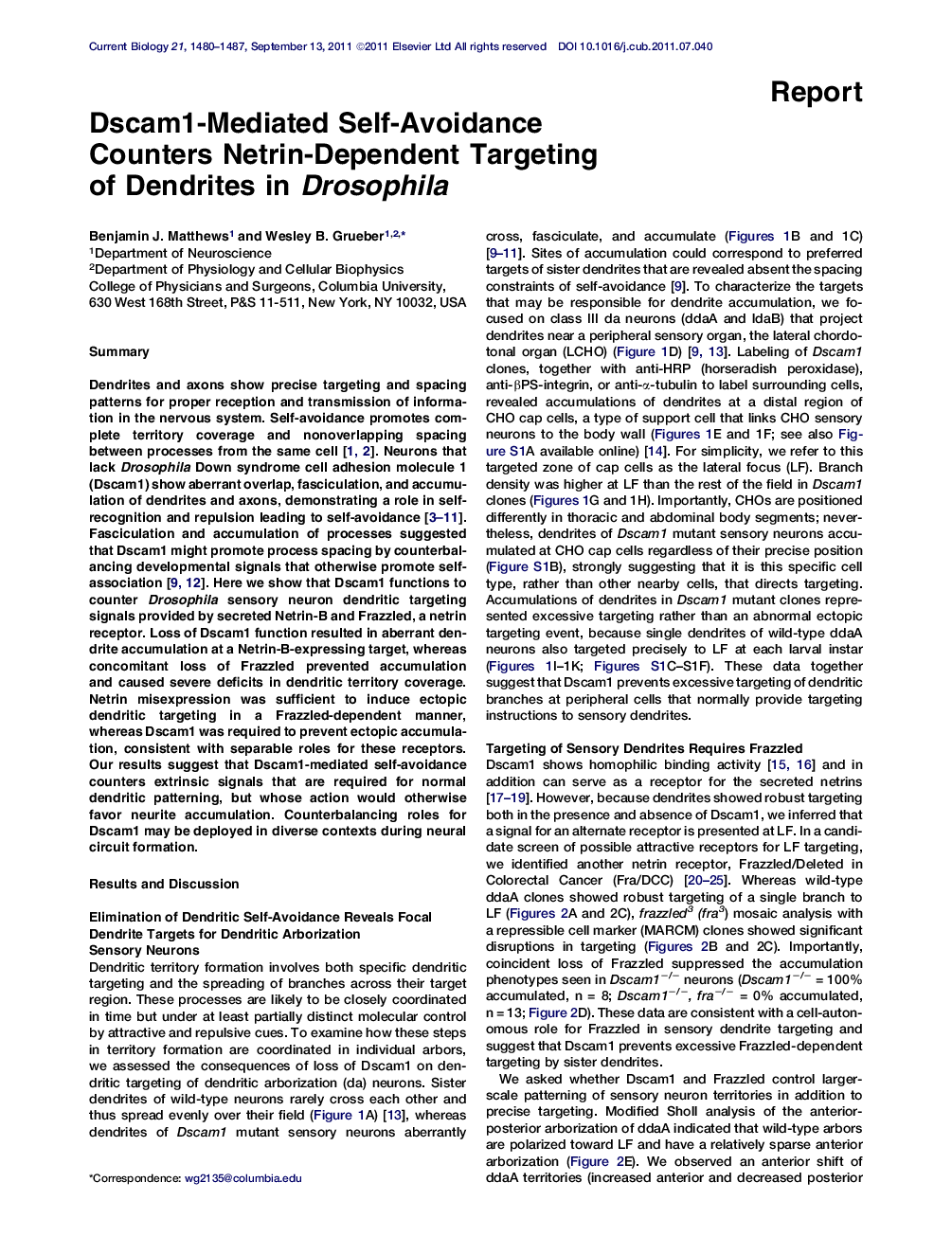| Article ID | Journal | Published Year | Pages | File Type |
|---|---|---|---|---|
| 2043119 | Current Biology | 2011 | 8 Pages |
SummaryDendrites and axons show precise targeting and spacing patterns for proper reception and transmission of information in the nervous system. Self-avoidance promotes complete territory coverage and nonoverlapping spacing between processes from the same cell [1 and 2]. Neurons that lack Drosophila Down syndrome cell adhesion molecule 1 (Dscam1) show aberrant overlap, fasciculation, and accumulation of dendrites and axons, demonstrating a role in self-recognition and repulsion leading to self-avoidance [ 3, 4, 5, 6, 7, 8, 9, 10 and 11]. Fasciculation and accumulation of processes suggested that Dscam1 might promote process spacing by counterbalancing developmental signals that otherwise promote self-association [ 9 and 12]. Here we show that Dscam1 functions to counter Drosophila sensory neuron dendritic targeting signals provided by secreted Netrin-B and Frazzled, a netrin receptor. Loss of Dscam1 function resulted in aberrant dendrite accumulation at a Netrin-B-expressing target, whereas concomitant loss of Frazzled prevented accumulation and caused severe deficits in dendritic territory coverage. Netrin misexpression was sufficient to induce ectopic dendritic targeting in a Frazzled-dependent manner, whereas Dscam1 was required to prevent ectopic accumulation, consistent with separable roles for these receptors. Our results suggest that Dscam1-mediated self-avoidance counters extrinsic signals that are required for normal dendritic patterning, but whose action would otherwise favor neurite accumulation. Counterbalancing roles for Dscam1 may be deployed in diverse contexts during neural circuit formation.
► The guidance cue Netrin-B and Frazzled control da sensory neuron dendritic targeting ► Dscam1 prevents aberrant dendrite accumulation at Netrin-B-expressing targets ► NetB is sufficient for ectopic dendritic targeting in wild-type or Dscam1−/− neurons ► Self-avoidance counterbalances uniform responses of sister dendrites to guidance cues
